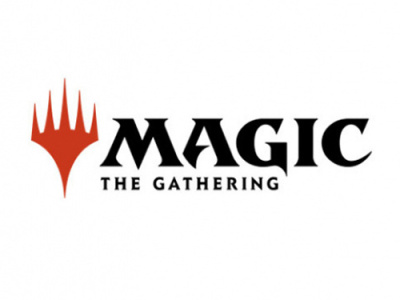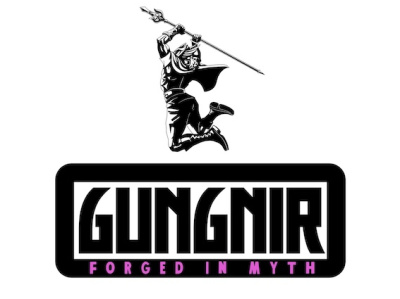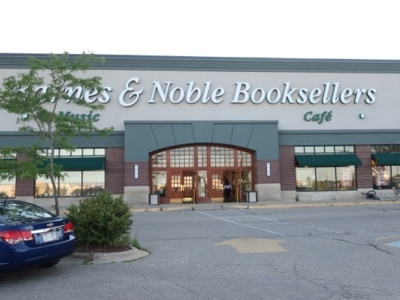Sharpening the Sword is a regular column by retailer John Riley of Grasshopper's Comics, a 1300 square foot comic and game store in
For the past few weeks I've been flirting with the 80/20 Rule and how it applies to the mass market and what we can learn from it. Basically, the 80/20 Rule states that 20% of anything is responsible for 80% of the results. So for example 20% of your comic titles might generate 80% of your comic sales. Or 20% of your Games Workshop customers are responsible for 80% of your Warhammer sales. I'm sure you've all heard of it and it's not like I'm telling you something you don't know. So how does it apply to the mass market and what does it mean to us?
Well, when we think 'mass market' we tend to think of a single defining characteristic: high volume. Stores like Wal-Mart are designed to sell huge quantities of whatever it is they sell. Since these stores know that 20% of the products within a certain category will generate 80% of the sales, these stores deal exclusively in that 20%. If the other 80% combined will only generate 20% of total sales, why bother devoting the space to them? After all, when you think of Wal-Mart do you really think about selection? No. Wal-Mart is not in business to provide you with the best selection of anything. Rather they are in the business of carrying, promoting, and selling a simply huge quantity of the top moving items in each category.
Here's an example. Wal-Mart wanted to sell more pickles. They made a deal with a major pickle manufacturer (I believe Vlasic) to sell a gallon of pickles for something like $4.00. Now honestly, who needs a gallon of pickles? Anyway, they made a large display of gallon pickle jars in each store and were moving somewhere around 80-100 gallons of pickles per store per week. Multiply that by the number of Wal-Marts and that's a simply unbelievable volume of pickles. Now if you were searching for a certain style of pickle, or a certain cut of pickle, or a certain brand of pickle, Wal-Mart couldn't help. But if you wanted a full gallon of pickles cheap, Wal-Mart was ready to serve you!
If we apply the 80/20 Rule to our own stores, we find that 80% of our sales is generated by 20% of our square footage, a number which is probably about right for most stores that I know. But mass market stores want every square foot to be within that 20%. After all, why pay for the other 80% if it's not producing? While we can easily spot the areas in our own stores that don't perform, can you really look at a Best Buy or Target and say that any area of those stores performs significantly less than the others? After all, while BestBuy might sell a higher volume of low margin CDs than high margin refrigerators, I'm guessing that in terms of actual profit both areas are justifying their floor space.
Again, most of this seems pretty obvious. So how does it affect us? Well, I think that as comics and games retailers we feel diametrically opposed to the mass market. 'They're evil, we're good, and that's all there is to it.' So by extension everything they do must be evil too. We would never carry just the top 20% of comic books printed each month, or the top 20% of a miniature line. We pride ourselves in offering a full selection, a wide variety, stocking wide not deep.
But I think this is an area where we can definitely learn from them. Let's say that 20% of your board games generate 80% of your board game sales. Knowing this information, how would you choose to use your space and energy to promote board games? I think the gut reaction of the anti-mass-market/comic-game-retailer in each of us is to devote space and energy to the games that aren't performing and highlight the high quality games we have that we don't believe are selling as well as they should. But the mass market would take a different approach. The mass market would see that 20% of the games strongly outperform the other 80%. Obviously these games appeal to a larger percentage of the population. Knowing this you would actually increase the amount of display space and effort marketing this 20% knowing that you have a much greater chance of increasing your sales.
This is an approach that we can definitely borrow and adjust to suit our strengths as independent retailers. In our store we just set a goal to sell 125 copies of Blokus before the next GAMA trade show, or roughly two and a half copies a week. We set up a very nice demo display right in our new front window so everyone passing by can check it out, come in and learn how to play.
Some would argue that Blokus is a great game that pretty much sells itself and we'd be better off putting the effort into other games that really deserve the effort. But in the mass market viewpoint we believe that since Blokus has such universal appeal we can sell it to the largest possible audience (after all, would you put something in your window that 20% of the people walking by were interested in, or something that 80% were interested in?).
For us, Blokus has the greatest potential to sell a large volume. And since Blokus is a great gateway game, we can use it to introduce the largest possible audience to the joys of specialty games, then utilize the product knowledge, service, and wide selection that the specialty market excels at to recommend other games that might not have as much initial appeal.
Recently we ran a report on our trade paperback category and found that almost exactly 20% of our trades accounted for 80% of sales. Obviously, these books seem to have a very broad appeal and in our store they generally are the books that we've come to recommend highly to customers who are just beginning to explore the world of comics. We don't recommend them simply because we like them, but rather because we know that there is a much greater chance that the customer will like them and return to try more. Once they've read a few of the various books we know have very wide appeal we can then make better recommendations on other less mainstream books that might suit their individual tastes.
We specialist retailers definitely have advantages over the mass market in terms of product knowledge, customer relationships, product diversity, and reaction time. I'm not saying that you should limit yourself to the top 20% of any category, but knowing what products fall into that 20% allows us to use those products as tools to interest and convert the general public into comic readers or gamers. And it also allows you to maximize your sales by putting effort into selling the products that you have the most potential with.
I'd like to end this with one thought, a thought which really caused us to change the way we organized our own business. For most stores that I talk to back issues make up a relatively small percentage of their business. Let's say that in the Comics category new comics are 80% of comics sold, while back issues are 20% (and I would assume for most of us it's probably closer to 95%/5%). But in almost every store I see back issues take up 80% of the comic display area, leaving about 20% for new comics. That's an odd use of resources, isn't it?
The 80/20 Rule can really make you look at your business differently.







